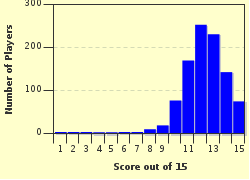Quiz Answer Key and Fun Facts
1. In the age of Camelot, what idea of a group of young people acting throughout the world did a youthful president introduce during his presidential campaign in 1960?
2. In 1961, what did Pampers introduce, much to the joy of mothers (where they were available)?
3. What did Sam Walton open in 1962 in Rogers, Arkansas?
4. What show did Johnny Carson begin appearing on in 1962?
5. In 1963 what numerical routing system was introduced which greatly helped the US Postal System?
6. What did Albert Sabin introduce in 1961 that helped save children from a life-threatening disease? Note: there was a huge conflict between Albert Sabin and Jonas Salk regarding methods of administering and creating this vaccine.
7. By 1962 which of these did 90% of American families own?
8. What point and click device did Douglas Engelbart invent which forever changed the electronic workplace?
9. What did Sony introduce in 1964 which allowed people to program their televisions so as to never miss any of their favorite television shows.
10. What did Lyndon B. Johnson create in 1965 that forever changed health insurance for retirees in America?
11. What substitute for the iron lung was introduced in 1965?
12. What first did Barclay's Bank initiate in 1967?
13. What surgeon performed the world's first successful human to human heart transplant?
14. What kind of watch did Seiko first sell in 1969?
15. What is the name of the predecessor of the Internet which was inaugurated in 1969?
Source: Author
Windswept
This quiz was reviewed by FunTrivia editor
bloomsby before going online.
Any errors found in FunTrivia content are routinely corrected through our feedback system.

